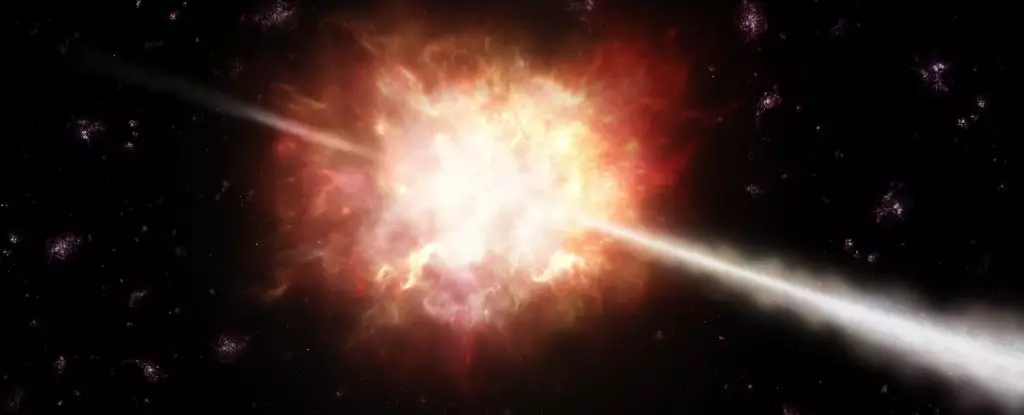Since the birth of the Universe in the Big Bang, the majority of elements heavier than hydrogen and helium have been created over the course of 13.8 billion years. While stars are responsible for the production of many heavier elements through nuclear fusion, they can only create elements as heavy as iron. This poses a puzzle as to how elements heavier than iron came to be. One possible explanation lies in the phenomenon of gamma-ray bursts (GRBs), the most powerful explosions in the Universe.
GRBs come in two main categories: long bursts and short bursts. Long GRBs are associated with the deaths of massive stars, while short bursts are caused by the collision of two neutron stars. The recent discovery of a signal from two neutron stars moving towards collision, followed by a short gamma-ray burst, provided evidence to support this theory. The resulting kilonova from this event indicated the production of heavy elements, shedding light on the process of element creation.
While nuclear fusion in stars can only produce elements as heavy as iron, the rapid neutron-capture process, or r-process, offers a way to create even heavier elements. This process involves the capture of neutron particles by nuclei, leading to the formation of heavier elements. Gamma-ray bursts provide the necessary conditions for the r-process to occur, but the rarity of events like the neutron star merger that caused the kilonova raises questions about the abundance of heavy elements in the Universe.
A study of the brightest gamma-ray burst, known as the BOAT, revealed some unexpected findings. Despite its extraordinary brightness, the event was classified as a relatively average supernova explosion. This challenges previous notions that the brightness of a gamma-ray burst correlates with the production of heavy elements through the r-process. The lack of evidence for heavy element production in the BOAT explosion suggests that gamma-ray bursts may not be the primary source of the Universe’s heavy elements.
The findings from studies of gamma-ray bursts like the BOAT point towards the need to explore alternative sources for the heavy elements in the Universe. While gamma-ray bursts have long been considered as potential sources, the lack of evidence for the r-process in some of these events raises questions about their role in element creation. Further research is necessary to uncover the true sources of the Universe’s heavy elements and deepen our understanding of the cosmic processes at play.


Leave a Reply